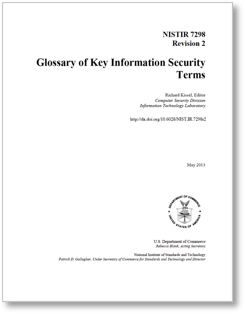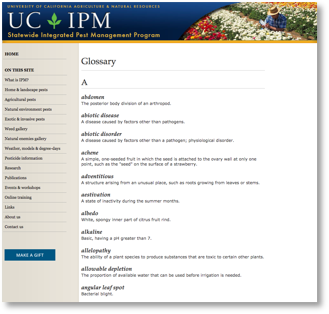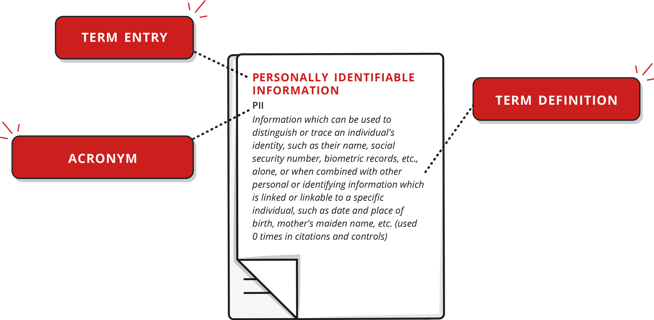Glossaries abound. Whether they are formal documents, such as the US’ National Institute of Standards and Technology’s Glossary of Key Information Security Terms, University of Oxford’s glossary of terms, or the University of California at Davis’ Pest glossary (shown left to right below), glossaries have a pretty simple format to them.



In general, glossaries are formatted like the one in the illustration below, with three key entries:

1. Term Entry – This is the term that will be defined. Many glossaries will capitalize each word in the term. Others will only capitalize the first word. The best written glossaries will not capitalize the term unless called for by a specific style (we’ll have more on that in the glossary style guide section).
2. Acronym – Some glossaries will place the acronym on a line below the term entry. Others will simply follow the term entry with the acronym in parentheses. The worst glossaries will have entries of acronyms where the terms should be. Naughty naughty.
3. Definition – And of course you have to have the definition. Like with this definition for Personally Identifiable Information that begins with the category of “information which can be used to distinguish or trace an individual’s identity”, and then follows up with differentiating content “name, social security number, biometric records”.
To write glossary entries, follow steps 1 through 6 of how to write definitions.